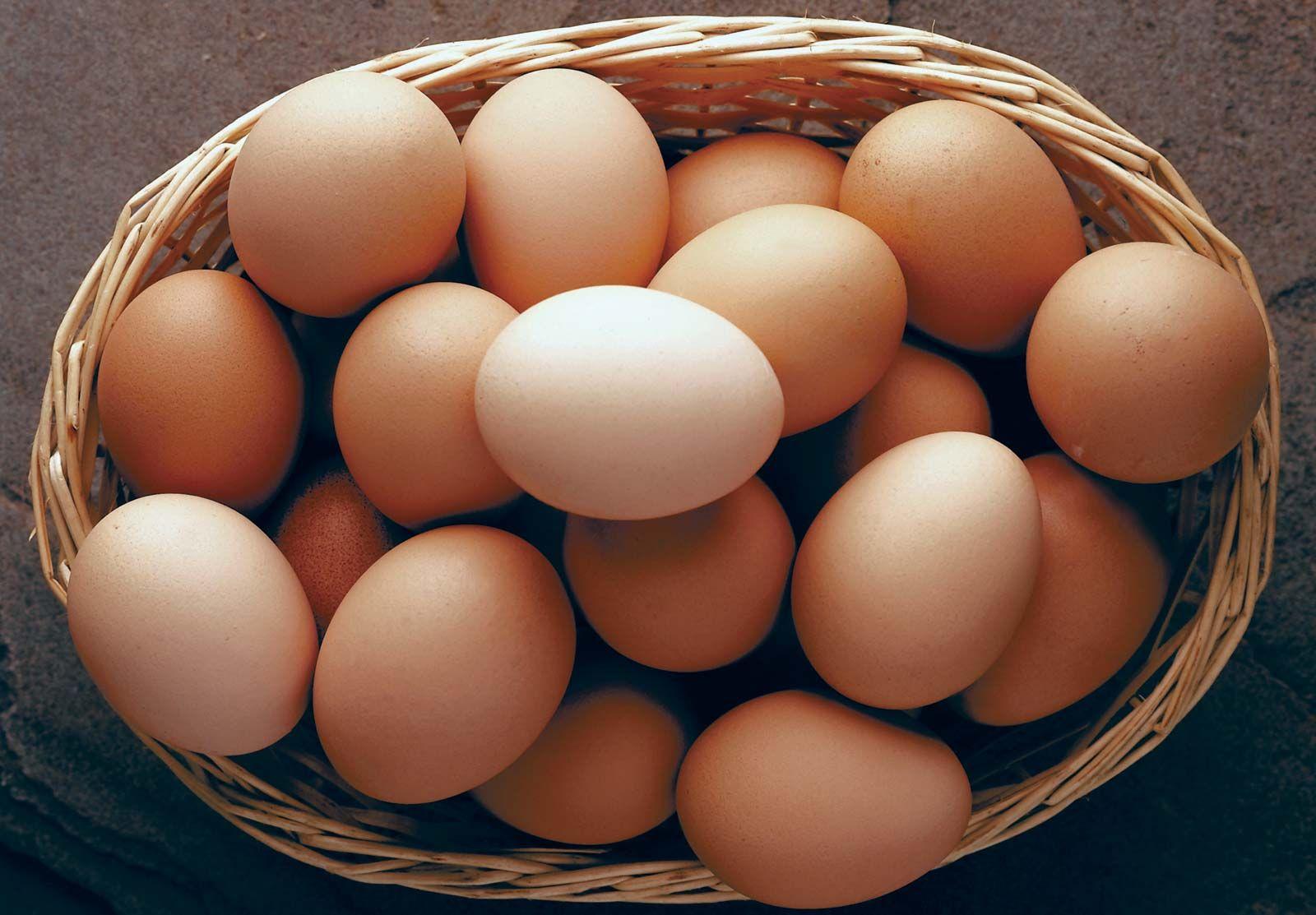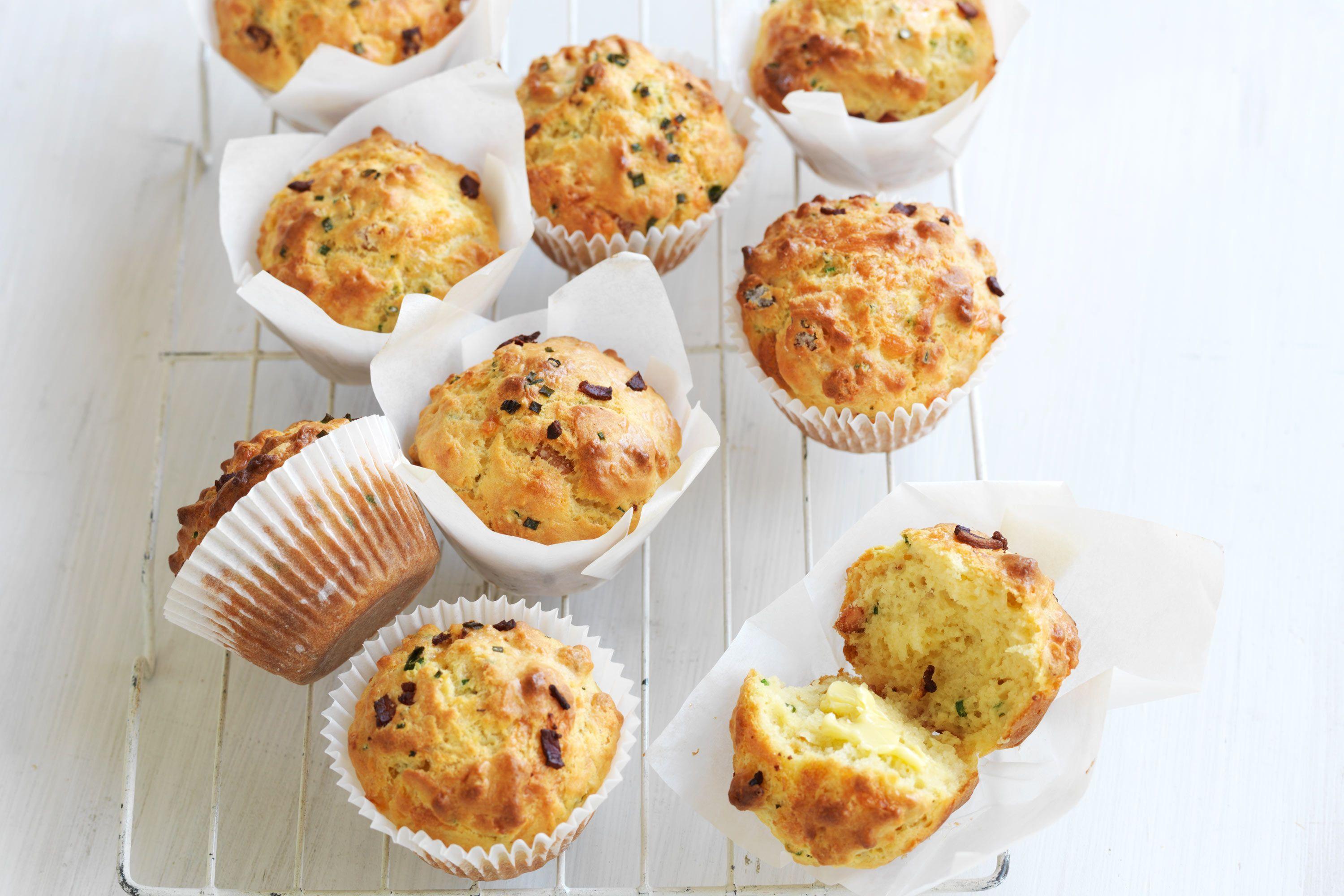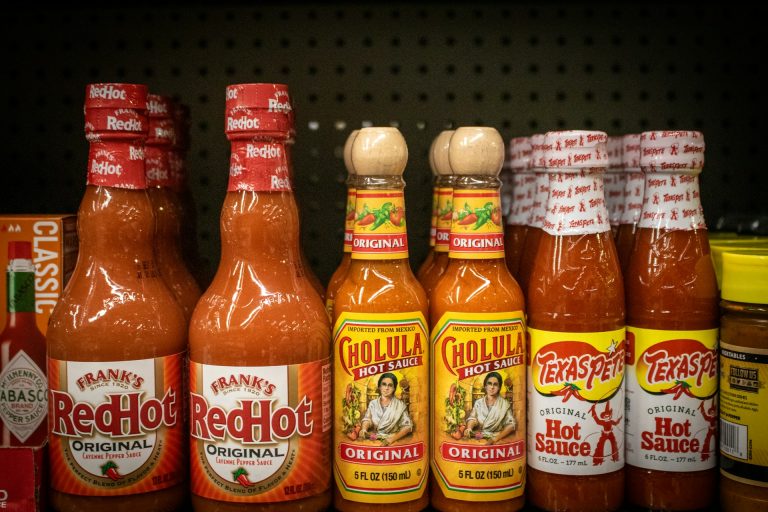22 Surprising Countable and Uncountable Food You Should Know

English grammar can be tricky, especially when it comes to food-related nouns. You might find yourself stumped when deciding whether to use “much” or “many” before certain food items.
It’s a common struggle that can lead to embarrassing mistakes. But don’t worry! I’ve got your back with a helpful guide that will clear up the confusion.
In this article, I’ll walk you through 22 surprising examples of countable and uncountable food.
You’ll learn the differences between these categories and pick up some handy tips to use them correctly in your everyday conversations.
List of Common Countable Foods
1.Apples

- Why It is Considered a Countable Food: Apples can be counted as individual units (e.g., one apple, two apples).
- Variety: Granny Smith, Fuji, Red Delicious, Gala.
- Size & Shape: Medium to large, round shape.
- Examples in Daily Life:
- “I have three apples in my lunch box.”
- “She bought a dozen apples from the store.”
- Health Benefits:
- High in Vitamin C and fiber.
- Promotes heart health and aids digestion.
- It may reduce the risk of diabetes.
2.Oranges

- Why It is Considered a Countable Food: Oranges can be counted as individual units (e.g., one orange, two oranges).
- Variety: Navel, Valencia, Blood Orange.
- Size & Shape: Medium to large, round shape.
- Examples in Daily Life:
- “She peeled two oranges for the juice.”
- “I ate one orange after breakfast.”
- Health Benefits:
- High in Vitamin C and antioxidants.
- Boosts immune system health.
- Supports skin and heart health.
3.Carrots

- Why It is Considered a Countable Food: Carrots are individual units that can be counted (e.g., one carrot and two carrots).
- Variety: Nantes, Danvers, Imperator.
- Size & Shape: Long and cylindrical, medium size.
- Examples in Daily Life:
- “I chopped three carrots for the salad.”
- “There are five carrots left in the fridge.”
- Health Benefits:
- Rich in beta-carotene (Vitamin A).
- Promotes eye health and immune function.
- It supports skin health and reduces the risk of cancer.
4.Tomatoes

- Why It is Considered a Countable Food: Tomatoes are countable in units (e.g., one tomato, two tomatoes).
- Variety: Cherry, Roma, Beefsteak.
- Size & Shape: Round or oval, varies from small to large.
- Examples in Daily Life:
- “I added two tomatoes to the pasta sauce.”
- “She sliced three tomatoes for the salad.”
- Health Benefits:
- High in Vitamin C and lycopene.
- It supports heart health and reduces the risk of cancer.
- Good for skin health.
5. Eggs

- Why It is Considered a Countable Food: Eggs are individual units that can be counted easily (e.g., one egg, two eggs).
- Variety: Chicken eggs, Duck eggs, Quail eggs.
- Size & Shape: Small to medium, oval shape.
- Examples in Daily Life:
- “I cracked three eggs for the omelet.”
- “There are six eggs left in the carton.”
- Health Benefits:
- Rich in high-quality protein.
- Contains essential vitamins like Vitamin D and B12.
- It is good for muscle development and brain health.
6.Sausages

- Why It is Considered a Countable Food: Sausages are individual items that can be counted (e.g., one sausage, two sausages).
- Variety: Pork, Chicken, Beef sausages.
- Size & Shape: Long and cylindrical, small to medium size.
- Examples in Daily Life:
- “I grilled four sausages for breakfast.”
- “They served two sausages per plate at the BBQ.”
- Health Benefits:
- High in protein and iron.
- It provides energy and helps build muscle.
- Good source of B vitamins.
7.Burgers

- Why It is Considered a Countable Food: Burgers can be counted individually (e.g., one burger, two burgers).
- Variety: Beef burger, Chicken burger, Veggie burger.
- Size & Shape: Round patties, medium size.
- Examples in Daily Life:
- “I ordered two burgers for lunch.”
- “They grilled five burgers for the party.”
- Health Benefits:
- High in protein (depending on the patty).
- Provides essential nutrients like iron and B12 (meat-based burgers).
- Veggie burgers are often high in fiber and vitamins.
8.Muffins

- Why It is Considered a Countable Food: Muffins can be counted individually (e.g., one muffin, two muffins).
- Variety: Blueberry, Chocolate Chip, Bran.
- Size & Shape: Small to medium, round.
- Examples in Daily Life:
- “She baked a dozen muffins for breakfast.”
- “I had two muffins with my coffee.”
- Health Benefits:
- Provides fiber and energy.
- It can be made healthier with whole grains and fruits.
- It is a good source of vitamins if made with nutrient-rich ingredients.
9.Cupcakes

- Why It is Considered a Countable Food: Cupcakes can be counted individually (e.g., one cupcake, two cupcakes).
- Variety: Chocolate, Vanilla, Red Velvet.
- Size & Shape: Small, round, with frosting on top.
- Examples in Daily Life:
- “I decorated six cupcakes for the party.”
- “He ate three cupcakes after dinner.”
- Health Benefits:
- Provides energy from sugar and fats.
- It can be customized to include healthy ingredients like fruits or nuts.
10.Loaves

- Why It is Considered a Countable Food: Loaves can be counted as individual units (e.g., one loaf, two loaves).
- Variety: Whole Wheat, Sourdough, Rye.
- Size & Shape: Medium to large, elongated or round.
- Examples in Daily Life:
- “I bought two loaves of bread from the bakery.”
- “He sliced one loaf for sandwiches.”
- Health Benefits:
- Provides carbohydrates for energy.
- Whole wheat loaves are rich in fiber and nutrients.
- It is a good source of B vitamins and minerals.
11.Cookies

- Why It is Considered a Countable Food: Cookies can be counted as individual units (e.g., one cookie, two cookies).
- Variety: Chocolate Chip, Oatmeal Raisin, Sugar.
- Size & Shape: Small to medium, round or square.
- Examples in Daily Life:
- “I baked two dozen cookies for the bake sale.”
- “She ate three cookies with her tea.”
- Health Benefits:
- Provides quick energy from sugar.
- It can be made healthier with oats, nuts, or whole grains.
- It is a good source of fiber if made with healthy ingredients.
List of Common Uncountable Foods
12.Water

- Why It is Considered an Uncountable Food: Water is measured in volume, not individual units (e.g., you cannot say “one glass of water,” but rather “one glass of water”).
- Variety: Mineral water, Spring water, Distilled water.
- Size & Shape: Liquid, no definite shape.
- Examples in Daily Life:
- “Please drink enough water every day.”
- “I had a glass of water with my meal.”
- Health Benefits:
- Essential for hydration and overall body function.
- It helps regulate body temperature.
- Supports digestion and nutrient absorption.
13.Milk

- Why It is Considered an Uncountable Food: Milk is measured by volume, not individual units (e.g., you ask for “a cup of milk,” not “one milk”).
- Variety: Whole milk, Skim milk, Almond milk.
- Size & Shape: Liquid, no definite shape.
- Examples in Daily Life:
- “I added some milk to my coffee.”
- “She drank a glass of milk with breakfast.”
- Health Benefits:
- Rich in calcium and Vitamin D.
- Supports bone health and growth.
- Provides high-quality protein for muscle repair.
14.Juice

- Why It is Considered an Uncountable Food: Juice is measured in volume, not in individual units (e.g., you drink “a glass of juice,” not “one juice”).
- Variety: Orange juice, Apple juice, Carrot juice.
- Size & Shape: Liquid, no definite shape.
- Examples in Daily Life:
- “She had a glass of juice with her breakfast.”
- “I prefer freshly squeezed juice.”
- Health Benefits:
- High in vitamins like Vitamin C.
- It can help boost immune system health.
- Provides hydration and antioxidants.
15.Wine

- Why It is Considered an Uncountable Food: Wine is measured in volume, not as individual units (e.g., you drink “a bottle of wine,” not “one wine”).
- Variety: Red wine, White wine, Rosé.
- Size & Shape: Liquid, no definite shape.
- Examples in Daily Life:
- “We shared a bottle of wine at dinner.”
- “I enjoy a glass of wine with my meal.”
- Health Benefits:
- Contains antioxidants, particularly resveratrol.
- It may help improve heart health (in moderation).
- It can reduce inflammation.
16.Rice

- Why It is Considered an Uncountable Food: Rice is measured by weight or volume, not counted individually (e.g., you cannot say “one rice,” but rather “a cup of rice”).
- Variety: White rice, Brown rice, Basmati.
- Size & Shape: Small, grain-shaped.
- Examples in Daily Life:
- “I cooked a cup of rice for dinner.”
- “She served rice with the curry.”
- Health Benefits:
- Provides carbohydrates for energy.
- Brown rice is high in fiber and essential nutrients.
- Supports digestive health.
17.Flour

- Why It is Considered an Uncountable Food: Flour is measured by weight or volume, not counted (e.g., you say “a bag of flour,” not “one flour”).
- Variety: All-purpose flour, Whole wheat flour, Almond flour.
- Size & Shape: Fine powder, no definite shape.
- Examples in Daily Life:
- “I need a cup of flour for the recipe.”
- “She bought a bag of flour from the store.”
- Health Benefits:
- Provides carbohydrates and some fiber.
- Whole wheat flour contains more nutrients than refined flour.
- It is used as a staple ingredient in many foods.
18.Pasta

- Why It is Considered an Uncountable Food: Pasta is measured by weight or volume, not counted (e.g., you say “a bowl of pasta,” not “one pasta”).
- Variety: Spaghetti, Penne, Fusilli.
- Size & Shape: Varies in shape—long, short, tubular, or spiral.
- Examples in Daily Life:
- “I cooked a pot of pasta for lunch.”
- “She served a plate of pasta with sauce.”
- Health Benefits:
- Provides energy through carbohydrates.
- Whole wheat pasta contains fiber and nutrients.
- It can be part of a balanced diet with vegetables and proteins.
19.Sugar

- Why It is Considered an Uncountable Food: Sugar is measured by weight or volume, not counted individually (e.g., you use “a spoonful of sugar,” not “one sugar”).
- Variety: White sugar, Brown sugar, Coconut sugar.
- Size & Shape: Small crystals or granules.
- Examples in Daily Life:
- “I added a teaspoon of sugar to my tea.”
- “She baked cookies with brown sugar.”
- Health Benefits:
- Provides quick energy.
- Brown sugar retains more nutrients than refined white sugar.
- It should be consumed in moderation to avoid health risks.
20.Cheese

- Why It is Considered an Uncountable Food: Cheese is typically measured by weight or volume, not as individual pieces (e.g., “a block of cheese” instead of “one cheese”).
- Variety: Cheddar, Mozzarella, Brie.
- Size & Shape: Varies can be in blocks, slices, or shredded.
- Examples in Daily Life:
- “She added grated cheese to the pizza.”
- “I bought a block of cheddar cheese.”
- Health Benefits:
- Rich in calcium and protein.
- Supports bone health.
- Contains beneficial fats and vitamins.
21.Butter

- Why It is Considered an Uncountable Food: Butter is measured by weight or volume, typically in sticks or pats, but not counted individually (e.g., “a stick of butter,” not “one butter”).
- Variety: Salted butter, Unsalted butter, Clarified butter (ghee).
- Size & Shape: Solid, typically sold in blocks or sticks.
- Examples in Daily Life:
- “I need a tablespoon of butter for the recipe.”
- “She spread butter on her toast.”
- Health Benefits:
- Provides healthy fats and fat-soluble vitamins (A, D, E).
- Source of energy.
- Clarified butter (ghee) is known for its longer shelf life and health benefits.
22.Cream

- Why It is Considered an Uncountable Food: Cream is measured by volume, not counted individually (e.g., “a cup of cream,” not “one cream”).
- Variety: Heavy cream, Whipping cream, Sour cream.
- Size & Shape: Liquid, thick consistency.
- Examples in Daily Life:
- “I added cream to my coffee.”
- “She whipped cream for the dessert.”
- Health Benefits:
- High in fats and fat-soluble vitamins.
- It’s a good source of energy.
- It can enhance the flavor and texture of dishes.
Conclusion
Now that we’ve explored these 22 surprising countable and uncountable food items, you’re better equipped to use them correctly in your daily conversations.
Remember, knowing the difference between countable and uncountable nouns isn’t just about grammar – it’s about communicating clearly and confidently.
This knowledge will help you order food at restaurants, write recipes, or chat with friends about your favorite meals without second-guessing yourself.
Why not challenge yourself to use these terms correctly in your next conversation? Or better yet, share this article with a friend who’s learning English. The more we practice, the more natural it becomes.
So, go ahead and put your new knowledge to the test!






